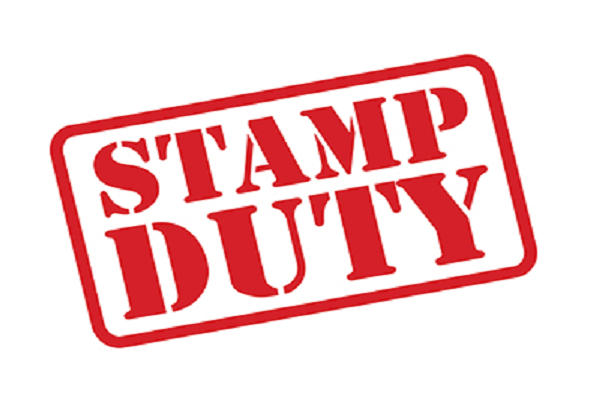Planning Permission Applications Down Once Again in Q1 2022
The lack of inventory in the UK’s prohibitively expensive housing market shows no signs of abating soon. According to the most recent figures published by the Department for Levelling Up, Housing, and Communities (DLUHC), just 84,000 of the 109,900 applications for planning permission submitted in Q1 this year were granted.
This equates to an 87% success rate for planning permission applications submitted during this time—down 4% compared to Q1 2021. This may sound less than significant, but it comes at a time when the UK is in dire need of a major uptick in affordable home availability.
In addition, the total number of planning permission applications received for the quarter was down 12% compared to the previous quarter.
A total of 9,300 residential planning permission applications were granted in England in the first three months of the year, a 6% decrease compared to the same time last year. 1,900 commercial planning permission applications were granted. Down 2% from Q1 2021.
Affordable inventory is urgently required
The dire need for rapid acceleration in the housebuilding sector was highlighted by Paul Neal of Missing Element Mortgage Services, who emphasised the importance of focusing on the availability of homes for people who actually plan to live in them.
“Not stock that is snapped up by landlords or builders to make a fortune on. Reliable, affordable housing for everyday people,” he said.
“Sadly, it’s not coming at anywhere near the pace it needs to, and planning is often the issue.”
Speaking on behalf of London-based property developer New Place, managing director Joe Garner said that the DLUHC data provides a clear indication that nowhere near enough homes are being built in the right places.
“The planning system is an absolute mess, and political infighting from central government all the way down to local councils is perpetuating the housing crisis,” he said.
Garner’s sentiments were echoed by Jamie Lennox, director at Norwich-based mortgage broker Dimora Mortgages, who likewise said that the government is not even coming close to meeting its own house-building targets.
“Many developments get stuck in planning for years, and until there is a quicker process to get sites approved, the ambitious plans for a certain number of new homes won’t ever materialise,” he said.
Help to build push continues
Meanwhile, the government continues to push its Help to Build scheme as a potentially affordable alternative access point to the UK housing market.
Help to Build provides those looking to build their own homes with the opportunity to access a special mortgage of up to £600,000, which can be secured with a deposit of just 5% and offers the first five years interest-free. This 95% LTV mortgage will only be available through a selection of approved lenders, and the scheme is being managed by Homes England.
“Through the Help to Build scheme, we will help thousands more people onto the property ladder by giving them the opportunity to build homes that are perfectly tailored to their needs and in the communities they want to live in,” said Housing Minister Rt Hon Stuart Andrew.
“This innovative scheme will build on our work to break down the barriers to homeownership, as well as create new jobs, support the construction industry, and kickstart a self- and custom-build revolution.”
Open to movers and first-time buyers alike, Help to Buy combines low initial deposit requirements with five interest-free years, followed by a 1.75% APR in the sixth year and incremental annual increases thereafter.
“Self-build isn’t the preserve of the wealthy, and Help to Build makes it more practical and accessible than ever before for people to build their dream home,” said Andrew Craddock, Darlington Building Society chief executive.
“This scheme also opens up opportunities for first-time buyers. It is a fantastic example of the market moving with the times and people’s changing wants and needs.”
The Benefits of Private Lending as Development Finance
As economic uncertainty continues to escalate, the UK’s biggest banks are becoming increasingly inflexible. Strict lending regulations coupled with complex in-house policies are making it more difficult than ever to qualify for specialist funding on the High Street.
Property developers and real estate investors in particular are feeling the pinch. Potentially lucrative projects are being left in limbo, or in some instances, failing to even get off the ground in the first place.
But this lack of flexibility and product availability on the High Street need not spell doom and gloom for investors and developers. It simply calls for a search for affordable funding beyond the High Street, which is where private lending comes into play.
A rapidly evolving segment
Demand for the kinds of flexible financial services that simply do not exist on the high street is being met by a rapidly expanding specialist lending sector. Across the UK, dozens of private lenders have gone into business to effectively (and in some cases literally) ‘bridge’ the gaps in the services provided by mainstream banks.
From bridging loans to auction finance to specialist development finance, it’s all available from an extensive network of private lenders.
What makes this specialised lending sector unique is how all applications for funding are assessed individually. None of the usual ‘binary’ application criteria apply; all requests are considered based on their broader merit.
This means that rather than being offered a limited range of off-the-shelf products, loans and development finance facilities are built from scratch to meet the exact requirements of the client. As a result, they get exactly what they need at a price they can afford, with terms and conditions that suit both the borrower and the lender.
The advantages of private lending
Seeking support from a specialist lender (as opposed to a mainstream bank) can be beneficial in the following ways:
- Flexibility: All aspects of the facility can be tailored to meet the unique requirements of the applicant. This includes LTVs as high as 90% or more, a wide variety of repayment options (loan terms) to choose from, and the option to ‘roll up’ interest into the final repayment.
- Accessibility: None of the normal restrictions apply when seeking financial support from a specialist lender. Even with poor credit, a history of insolvency, and/or no formal proof of income, it is still possible to qualify for flexible and affordable products like bridging loans.
- Speed: With all required paperwork and documentation in place, bridging loans and development finance loans can be arranged within a few working days. On the High Street, the closest comparable products could take weeks (if not months) to underwrite.
- Affordability: Interest rates and overall borrowing costs are always open to negotiation with specialist lenders. Some short-term facilities can be taken out for as little as 0.5% per month, with no initial arrangement fees, admin fees, or deposit payments required.
- Freedom: Importantly, specialist lenders place few (if any) restrictions on how their products can be used. While traditional banks limit their loans and mortgages to very specific purposes, similar products from specialist lenders can be used for any legal purpose.
It is also possible to request a decision in principle on a bridging finance or development finance application without posing a risk to your credit score.
Far from a last resort, more businesses (and mainstream borrowers) than ever before are setting their sights on the UK’s growing specialist lending sector. With the support and representation of a skilled broker, a product search that goes beyond the High Street can pave the way for significant savings.
Not to mention, it is a far faster, easier, and less stressful experience than applying for funding via conventional channels.
For more information on any of the above or to discuss property development finance in more detail, contact a member of the team at UK Property Finance today.
Land Mortgages: An Introductory Guide
Getting a land mortgage is rarely a straightforward task. This is mainly due to a lack of available options, as most major lenders offer comparatively few (if any) specialist loans for land.
Hence, shopping around for a great deal on a landlord mortgage typically means looking beyond the usual High Street banks.
The UK’s specialist lending community has a wide variety of loan options available for land purchases. Examples of this include development finance loans, bridging loans, commercial loans, and various other types of secured loans.
However as many of these lenders do not offer their services directly to borrowers, applications must be submitted via an approved broker.
Can I get a mortgage for land?
Yes, land mortgages are available from a wide variety of specialist lenders. However, qualifying for a land mortgage can be more difficult than obtaining a conventional mortgage.
With a traditional home loan, the funds are secured against the property you are purchasing. With a land mortgage, the property has not yet been built. Therefore, if the lender issues a loan that also covers the costs of building the property, they are taking a much bigger risk.
Lenders, therefore, need to see evidence of what the borrower intends to do with the land after it has been purchased. A full independent valuation of the proposed property or development must also be provided, which will be used as the basis for the maximum loan value issued.
What are the different land mortgage options available?
Specialist lenders offer a variety of different types of land mortgages, in accordance with the requirements of the applicant. Examples of these include:
- Self-build mortgages
- Agricultural mortgages
- Woodland mortgages
- Development Finance
Ensuring you apply for the right mortgage is essential in order to get the best possible deal. If in doubt, consult with an independent broker, who will ensure you understand the unique features of the land mortgage options available.
Do I need to get planning permission ahead of time?
Not necessarily, but it will certainly broaden your borrowing options. When planning permission is granted on a plot of land, its value increases significantly. It also reassures the lender that your plans for the land can go ahead.
Obtaining a mortgage for land without planning permission is still possible but can be much more difficult. If you intend to apply for planning permission in the future or have other plans for the land you are purchasing, your broker will advise on the appropriate loan options.
What are the different types of planning permission for land?
There are two main types of planning permission that can be obtained for a plot of land. Both of which could significantly boost your chances of qualifying for a competitive mortgage:
Outline planning permission (OPP)
This is an agreement in principle issued by the local council, where one or more dwellings are to be constructed on a plot of land. OPP agreements are valid for a limited period of time (typically three years) and will need to be renewed once they have expired.
In order to qualify for a land mortgage after obtaining planning permission, your lender will expect to see formal evidence of the following:
- The overall layout of the proposed dwelling(s)
- The appearance of the dwelling(s)
- Upper and lower limits for the height, width, and length of the dwelling(s)
- Site access details
- Landscaping proposals
Full planning permission (FPP)
Typically valid for a longer five-year period, full planning permission is granted upon meeting more extensive criteria. An application for FPP must satisfy all the requirements above, supplemented with detailed scale drawings of the property (or properties) and more detailed information.
FPP is always desirable in the eyes of lenders, as it adds considerable value to any plot of land. With FPP, a plot of land becomes more attractive to potential buyers, making it a safer asset to secure a loan or mortgage against.
What needs to be in my financial plan?
A detailed financial plan will need to be presented as part of your application. This is essentially a summary of all estimated construction costs, along with estimated labour costs, the logistics of how the property will be constructed, contractors who will be involved in the project, and so on.
Essentially, this is where you need to convince your lender that your project is not only viable but also economically sound. In addition, almost all lenders impose restrictions on the types of properties they will lend against and even the materials they are made of.
For example, brick-built properties are the only acceptable properties for some lenders.
Your financial plan, therefore, needs to be as detailed and comprehensive as possible. The clearer you outline your intentions and the specifics of your project, the more likely you are to qualify for funding.
How do land mortgages work?
Land mortgages work similarly to development finance loans, in that the funds are released in a series of stages. For example, the first instalment may be released to cover the costs of the land itself, followed by several subsequent instalments for key phases of the construction project.
This involves the use of surveyors hired by the lender to monitor the progress of the project. When the bank is satisfied that a key phase of the project has been completed, they will release the next instalment.
It is also possible to arrange a land mortgage that is paid in the form of a single lump sum. Bridging loans, for example, can be arranged and accessed in a matter of days, making them ideal for time-critical purchases and investment opportunities.
When the construction project is complete, the land mortgage can be repaid in the same way as a conventional mortgage. Or, in the case of a shorter-term facility, transition to a longer-term repayment loan.
There’s also the option of selling the property upon its completion in order to repay the loan in full and retain the profits.
How high are land mortgage rates?
Interest rates on land mortgages vary significantly from one product and provider to the next. As a general rule of thumb, the lowest rate you can expect to be offered is around 3%, but a more typical land mortgage rate would be around 4.5%.
With short-term funding options like bridging finance, interest is charged on a monthly basis, often as low as 0.5%. This could make a promptly repaid bridging loan a uniquely cost-effective facility, with no additional fees or penalties payable for early repayment.
How are land mortgage fees charged?
Additional borrowing costs vary on the basis of multiple factors, including the type of mortgage taken out and the issuer.
As with any mortgage, you will incur fees that you will need to consider before applying, such as:
- Application Fees: Also known as arrangement fees, processing fees, and admin fees, which can be anything from zero up to 2% of the value of the loan,
- Valuation Fees: The lender will want to see a formal valuation of the project’s estimated final value, provided by an approved surveyor and paid for by the borrower.
- Legal Fees: All legal fees and conveyancing fees must also be covered by the applicant, which may be charged as a flat fee or a percentage commission on the value of the loan.
Comparing the market with the support of an experienced broker holds the key to getting an unbeatable deal, irrespective of the type of land mortgage you apply for.
Can land be refinanced?
It is always advisable to consider refinancing options as soon as the project is complete. This is due to the fact that interest rates and borrowing costs on land mortgages have a tendency to be higher than those of conventional mortgages.
If the home (or homes) constructed on the land qualify for a standard residential mortgage, significant savings could be made. However, even bigger savings could be made by using a short-term facility (such as a bridging loan) to cover the costs of the project and repay the full outstanding balance as quickly as possible.
For more information on any of the above or to discuss land mortgages in more detail, contact a member of the team at UK Property Finance today.
Buy-to-Let Property Investments: What First-Time Landlords Need to Know
Established and aspiring landlords alike continue to question the potential benefits of purchasing BTL properties via a limited company. Understandable, given the government’s no-holds-barred approach to BTL legislation over recent years.
Landlords were first hit (and hard) back in 2016, when the government introduced a new 3% stamp duty level on BTL property purchases. Next, policy reforms slashed mortgage and loan interest relief on second homes, which would eventually be removed entirely by 2021.
2019 brought more bad news for landlords in the form of the Tenants Fees Act, imposing much greater restrictions on what tenants could and couldn’t be charged for by property owners.
Whichever way you look at it, turning a profit as a private landlord is becoming trickier all the time. But as demand for quality rental homes skyrockets and average monthly rents break every record in the books, there’s still good money to be made with savvy BTL investments.
In total, the value of the UK’s BTL sector has grown from £239 billion in 2017 to more than £1.7 trillion today.
“There have been many challenges that have subdued investment into the private rental sector over the past few years,” comments Stephen Clark a bridging finance broker.
“But the sector has proved resilient, and we have seen continued demand for finance in this vibrant part of the economy.”
Safety and stability
The property market, in general, remains a relative safe haven for investors. Even the catastrophic events of the past two years have done nothing to quell the public’s appetite for quality homes in desirable locations.
In fact, figures from Nationwide suggest that from March 2020 to December 2021, average house prices in the UK grew by more than 16%.
Responding to demand from homebuyers and investors alike, major banks have been diversifying their mortgage portfolios as of late. BTL mortgage products, in particular, are available in abundance; there were more than 2,235 specialist mortgages at the end of last year.
What’s more, many banks have also been cutting interest rates on five-year fixed mortgages for BTL borrowers as a means to encourage more landlords to make their moves.
“The BTL sector has faced its share of upheaval and changes to regulations and requirements, so it is highly encouraging to see that providers are still keen to attract first-time landlords,” said Eleanor Williams at Moneyfacts.
“Rents have risen at the fastest rate on record, while tenant demand has almost doubled.”
Still, with inevitable Bank of England base rate hikes on the cards, mortgages across the board are not going to get any cheaper than they are now.
But when it comes to maximising profits and minimising tax liability on a BTL property, is it better to purchase homes through a limited company?
The pros and cons of limited company investments
Forming a limited company to purchase real estate is not something that should be done without careful forethought. In addition, the advice and input of an experienced broker could prove invaluable.
From a general perspective, the benefits of using a limited company to purchase a BTL property are as follows:
- All profits generated on limited company BTL property purchases are subject to flat-rate corporation tax at 19%. By contrast, private landlords are subject to standard income tax bands, which are 20% in the normal band and up to 45% for higher-rate taxpayers.
- Mortgage interest is classified as a business expense for limited companies, meaning it is tax-deductible. For private landlords, a tax credit of just 20% can be claimed on mortgage interest payments.
- Revenue withdrawal options are also broader. All profits received by private landlords are taxed, whereas profits taken out of limited companies are only taxed once.
- There are also options for decreasing overall tax liability, such as forming a family investment firm or a limited liability partnership. Assets can also be transferred to family members to avoid or reduce inheritance tax.
Downsides also apply with limited company BTL investments, including the following drawbacks:
- Mortgage options are much more limited for businesses looking to purchase BTL properties, and it can be more difficult to qualify.
- Larger deposits are the norm for these kinds of property investments, along with higher rates of interest and elevated borrowing costs.
- Along with corporation tax, dividends withdrawn from the company are also taxable.
- In order to transfer a property you already own into a company holding, it needs to be sold in the normal way. This means paying stamp duty at the normal rate, along with all associated conveyancing and legal fees, plus capital gains tax.
Despite this fairly even split of pros and cons, more landlords are purchasing properties through limited companies than ever before. In fact, the figures suggest that around 80% of all BTL mortgages are being issued to limited companies.
“Getting the ownership structure right might make a tremendous difference in the amount of tax you pay throughout your lifetime,” commented Rob Dix (the Property Geek).
As a general rule of thumb, experts advise considering forming a limited company where a landlord has a minimum of three private rental properties. By contrast, landlords with two properties or a single rental home may find it more cost-effective to simply hire an accountant to oversee their affairs.
What is Invoice Finance? Advantages and Disadvantages
Invoice finance provides businesses with the opportunity to access money they are owed by their own customers in advance. In doing so, delays between issuing invoices and collecting payments can be shortened or eliminated entirely.
Where the business issues an invoice, the recipient may have anything from seven to 90 days to pay, sometimes even longer. During this time, the business must continue to make ends meet with its own on-hand capital reserves.
Effectively a financial ‘gap-filler’ for such scenarios, invoice finance allows the business to access its owed capital immediately.
How does invoice financing work?
Invoice finance can be beneficial for any business (or sole trader) for which significant gaps between raising invoices and receiving payments are the norm.
The facility is arranged by a specialist lender, who takes into account the company’s financial status and the professional background of the applicant. Pending invoices are then used to determine how much the business is owed, and the lender issues a loan to cover this outstanding amount.
Over the subsequent weeks or months, the business repays the loan as it collects payments from its customers.
“As the culture of late payment continues to rise here in the UK, the threat that this poses to businesses also grows. Our recent survey results highlight just how vital invoice finance is to businesses,” explained Phil Chesham, head of invoice finance at Time Finance.
“Of the business owners surveyed, 67% reported that an invoice finance facility helps them to pay suppliers, HMRC, employees, and other financial commitments on time. 50% told Time Finance that it helps to manage late payments from customers, and over one-third said it helps them to better combat the current economic challenges such as rising costs and inflation.”
“With late payment debt as high as £200,000 for one in five UK SMEs, invoice finance solutions are as vital as ever, and with the addition of our credit control service here at Time Finance, we can really take the strain away from chasing payments and protect our clients’ customer relationships.”
What Are the Advantages of Invoice Finance?
The potential benefits and cost-effectiveness of invoice finance will always vary significantly from one business to the next.
For those who stand to benefit from an invoice finance agreement, the main advantages of the facility are as follows:
- Access to Quick Cash: Businesses with plenty of liquid capital always enjoy a competitive advantage over those with limited cash reserves. With invoice finance, the business gains access to the money it is owed right after its invoices are issued.
- No Assets at Risk: Invoice finance is issued in the form of a specialist unsecured loan, for which the invoices themselves serve as a form of collateral for the facility. This means no physical assets need to be put on the line and subsequently put at risk.
- Missed or Late Payments: It can also be a useful facility for avoiding (or minimising) the consequences associated with missed or late invoice payments. Where customers pay late, the business can still access the money it is owed in a timely manner.
- Reputation Protection: Most businesses rely on their customers’ payments to meet their own payment obligations. Invoice financing can make it much easier for businesses to keep their own commitments, protecting both their reputation and their credit status.
What are the disadvantages of invoice finance?
Invoice finance is not suitable for all businesses, and there are downsides to such agreements that must be considered. The most important examples are as follows:
- Restricted to Business Customers: The only invoices that can be paid early as part of an invoice finance deal are those issued to other businesses. Invoices issued to the public cannot be claimed early on invoice finance.
- Potential Relationship Strains: With some types of invoice financing (invoice factoring), the lender subsequently takes charge of chasing up the borrower’s customers for payment. Depending on how this is handled, it could result in frayed relationships between the business and its customers.
- Long-Term Costs: Invoice finance can prove a highly cost-effective and beneficial solution, but it is never offered free of charge. Irrespective of the terms, conditions, and duration of the agreement, it will always result in additional costs for the business.
All the above pros and cons will be discussed in full during your initial consultation, during which your broker will help you determine your suitability and eligibility for invoice finance.
Invoice Finance in Practice
To illustrate how invoice finance works in practice, consider the following example scenario:
- A small business issues an invoice for £5,000 to a customer with a 30-day payment deadline.
- The business would like to get this money back as quickly as possible in order to invest it in a new project.
- An invoice finance agreement is reached for 85% of the value of the invoice, with total borrowing costs of 3%.
- The business receives a payment of £4,250 from the lender, i.e., 85% of the value of the invoice raised.
- When the £5,000 invoice is paid, the full £5,000 is transferred directly into the account of the lender.
- The borrowing costs (£150) are subtracted from the remaining value of the invoice (£750), and the remaining £600 is transferred back to the business.
All invoice finance contracts are bespoke agreements tailored to meet the exact requirements of the business in question. In most instances, the logistics of invoice finance are fairly similar and surprisingly straightforward.
For more information on any of the above or to discuss the potential benefits of invoice finance in more detail, call anytime for an obligation-free consultation.
What is Stamp Duty (and How Can a Bridging Loan Help)?
With the Stamp Duty holiday having officially ended, normal rates have resumed. This means that both first-time buyers and movers alike must once again factor Stamp Duty costs into their property purchase decisions.
What is stamp duty?
Getting to grips with the fundamentals of Stamp Duty is fairly straightforward, but essential nonetheless. Stamp Duty is payable on millions of property transactions each year, but not everyone is liable for Stamp Duty payments.
For example, residential property buyers in England and Northern Ireland pay no Stamp Duty on the first £125,000 of the property’s value. In addition, first-time buyers pay no Stamp Duty on the first £300,000 of their home’s market value.
After which, 5% is payable on the price of the property between £300,000 and £500,000. Higher rates apply for properties valued at £500,000 or more.
This means that most first-time buyers are not liable for Stamp Duty payments at all, with most property transactions in the UK falling below £300,000.
Different rules apply in Wales, where Land Transaction Tax is payable on homes valued at £180,000 or higher. Likewise, homes valued at £145,000 or more (or £175,000 for first-time buyers) are subject to Land and Buildings Transaction Tax in Scotland.
But what remains consistent across the board is the requirement to pay this property purchase tax as quickly as possible. You have just 14 days to make the payment in full, which is where a fast-access bridging loan could get you out of a bind.
Stamp duty on second homes
Existing homeowners purchasing a second property in England or Northern Ireland with a value in excess of £40,000 are liable for an additional 3% Stamp Duty payment (on top of the normal sum).
This applies to holiday homes, buy-to-let properties and second homes in general, but does not apply to houseboats, caravans and other non-static homes.
This higher-rate Stamp Duty may also be payable if you complete the purchase of your next home before selling your current home. However, you will be able to apply for a refund of this additional 3% Stamp Duty once the sale of your previous home is complete.
If you need a temporary financial solution to ‘bridge’ the gap between buying and selling, an affordable bridging loan could be just the thing.
Call UK Property Finance anytime to discuss the potential benefits of bridging loans in more detail.
Current stamp duty thresholds
As of October 1st 2021, the following Stamp Duty threshold came into effect for most homebuyers in England and Northern Ireland:
|
Proportion of property value |
Stamp Duty paid |
|
Up to £125,000 |
0% |
|
£125,001 – £250,000 |
2% |
|
£250,001 – £925,000 |
5% |
|
£925,001 – £1.5m |
10% |
|
£1.5m+ |
12% |
Land Transaction Tax (LTT) applicable in Wales as of July 1st 2021 are as follows:
|
Property value |
Land Transaction Tax paid |
|
£0 – £180,000 |
0% |
|
£180,001 – £250,000 |
3.5% |
|
£250,001 – £400,000 |
5% |
|
£400,001 – £750,000 |
7.5% |
|
£750,001 – £1.5m |
10% |
|
£1.5m+ |
12% |
Home purchases in Scotland are currently subject to Land and Buildings Transaction Tax (LBTT) at the following rates:
|
Property value |
Land and Buildings Transaction Tax paid |
|
£0 – £145,000 |
0% |
|
£145,001 – £250,000 |
2% |
|
£250,001 – £325,000 |
5% |
|
£325,001 – £750,000 |
10% |
|
£750,001+ |
12% |
Stamp duty on buy-to-let properties
Private landlords have been hit particularly hard by recent tax reforms in the UK and are also subject to higher Stamp Duty payments than conventional homebuyers.
A 3% surcharge now applies on all BTL property purchases valued at £40,000 or over – a full breakdown of current thresholds is as follows:
|
Proportion of property value |
stamp duty paid |
|
Up to £125,000 |
3% |
|
£125,001 – £250,000 |
5% |
|
£250,001 – £925,000 |
8% |
|
£925,001 – £1.5m |
13% |
|
£1.5m+ |
15% |
Buy-to-Let properties are subject to different taxation rules in Wales and Scotland – the respective information for which can be found on each country’s official government website.
Bridging loans for stamp duty payments
It is a legal requirement to meet HMRC’s Stamp Duty demands within 14 days of a property purchase being agreed upon. After this, significant penalties may be payable, increasing as the debt remains unpaid.
This is where affordable bridging finance has the potential to save homebuyers time, money and stress. If difficulties are encountered covering Stamp Duty obligations, a short-term bridging loan offers an ideal solution.
Unlike most conventional loans, bridging finance can be arranged within a few working days. This makes it ideal for covering time-critical expenses, where delays could lead to further costs and complications.
In the case of Stamp Duty, a bridging loan could be taken out to cover the required payment and repaid after a few months. Bridging finance is typically charged at a rate of around 0.5% per month, making it a uniquely cost-effective facility when repaid promptly.
A few common features of bridging loans:
- Funds can be arranged and accessed in a few days
- Loans available from £10,000 with no upper limits
- No monthly repayments or initial deposit
- Interest rates as low as 0.5% per month
- Open to poor credit applicants and self-employed workers
- Can be secured against most types of properties
- Ideal for time-critical tax payments
Bridging loans are issued primarily on the basis of two things – security for the loan and a viable exit strategy. In the case of Stamp Duty payments, most bridging loans are repaid when the borrower’s previous home sells, or with personal savings accrued over the course of several months.
It is even possible to repay bridging finance with a conventional unsecured loan or personal loan, which can then be repaid gradually with affordable monthly instalments.
If you have any questions or concerns regarding your capacity to meet your Stamp Duty obligations, call UK Property Finance anytime for an obligation-free consultation.
What other purposes can bridging loans be used for?
The beauty of bridging finance lies in its versatility, as the funds can be used for almost any legal purpose.
Just a few of the most common applications for bridging loans in the UK include the following:
- Escaping the property sales chain
Bridging finance can grant existing homeowners the spending power of a cash buyer when looking to relocate. Rather than relying on the sale of their current home to fund their move, they can buy their next home with a bridging loan and repay the facility at a later date when their previous home sells.
- Renovations, restorations and conversions
Sellers intent on selling their properties for the best possible price often conduct repairs and renovations, prior to putting them on the market. Bridging loans are commonly used to fund minor, moderate and major renovations to residential properties, with the aim of repaying the loan when the property sells for an agreeable price.
- Auction property purchases
Buying a low-cost property at auction means paying the full outstanding balance within 28 days; as bridging finance can be organised within a few working days, it is ideal for funding time-critical purchases and investment opportunities like these.
- Fast purchases
It could also simply be that you have found your dream home at an unbeatable price, and you would prefer not to be beaten to the punch by a competing bidder. With bridging finance, rapid property purchases are possible without having to rely on conventional loans or mortgages.
- Starting a business
Bridging finance also has an endless range of business and commercial applications. Many borrowers use bridging loans to raise the funds needed to start a new business, repaying the loan at a later date when their start-up begins turning a profit. Lending criteria for bridging finance are fairly relaxed, making it ideal for entrepreneurs with no provable experience or track record.
How can I get a bridging loan?
The key to getting a good deal on a bridging loan lies in seeking experienced broker support at an early stage. Your broker will help determine your suitability for bridging finance before scouring the market to find the perfect product for your needs.
They will also negotiate on your behalf to ensure you get an unbeatable deal while ensuring your application is processed as quickly and smoothly as possible.
For more information on any of the above or to discuss the benefits of bridging finance in more detail, contact a member of the team at UK Property Finance today.
Johnson’s New Mortgage Affordability and Right to Buy Plans Prompt Outrage: Here is How We Can Help
There was never any doubt that Boris Johnson’s plans to help as many Brits as possible get on the housing ladder would be anything but a big disappointment. We already knew much of what he was going to say before his already infamous remarks were voiced in Blackpool this week.
“We’re going to look to change the rules on welfare, so 1.5 million working people who are in receipt of housing benefits and want to buy their first home will be given a new choice: to spend their benefit on rent as now, or put it towards a first-ever mortgage,” he said.
“Doing so removes a significant barrier that currently prevents hundreds of thousands of families from buying their own home.”
“We’re going to explore discounting lifetime and Help to Buy ISA savings from Universal Credit eligibility rules”.
Support for ‘trapped’ housing association tenants?
In addition to the above, he talked about an extension to the existing Right to Buy scheme, which will give up to 2.5 million housing association households the opportunity to purchase their properties at a discounted price.
“They’re trapped; they can’t buy; they don’t have the security of ownership; they can’t treat their home as their own or make the improvements that they want,” he said.
“So, it’s time for change. Over the coming months, we will work with the sector to bring forward a new Right to Buy scheme.”
All of this is somewhat predictable, as was the reaction from those within the housing and mortgage sectors who were quick to lambast the ailing prime minister.
“There are real practical problems; to qualify for Universal Credit, you’ve got to have savings of less than £16,000, which means that most people who the government is trying to reach with this announcement are not going to have anything near the amount that they need for a deposit,” said Shadow Levelling Up Secretary.
Her sentiments were echoed by Edward Checkley, managing director of London-based property finance specialists, who highlighted the dangers of plunging struggling households into further debt.
“This policy would go against all sensible lending practices, considering housing benefit is typically awarded to assist with rental payments if unemployed or on a low income, and to households with less than £16,000 of savings,” he said.
“With the cost-of-living crisis already affecting lower-income households, how can saddling them with debt be responsible?”
Elsewhere, the founder of Mansfield-based Shaw Financial Services, Lewis Shaw, gave the prime minister both barrels and joined the growing call for his resignation.
“Mortgage lenders already allow people to use state benefits to support a mortgage and have done so for years. It varies from lender to lender exactly which state benefits they’ll take into account, so I’m not sure what a new policy could be,” he said.
“It’s almost as though they don’t know how the mortgage market works already. If we’re to believe they want higher LTV mortgages, there’s only one place to go, and that is 100% LTV. However, again, we already have 100% LTV as a couple of lenders allow you to take a personal loan as a deposit.”
“It’s more bluster from the blond blancmange. Just resign for God’s sake and let someone with an ounce of competence and integrity have a crack.”
The ‘strength in numbers’ approach to home buying
Increasingly, millions of prospective first-time buyers are counting themselves out of the running as far as home ownership is concerned. Even when coming up with the required deposit to qualify for a mortgage is possible, skyrocketing house prices are pricing many out of contention.
With average house prices now hovering around £300,000, lenders’ policies on salary-based maximum mortgage sizes are proving increasingly unrealistic. Capped at around 4.5 times the applicant’s salary, even a £35,000 per year earner would fall drastically short of the mark.
A mortgage of £157,000 has been more or less useless across much of the UK for years, thus painting an even more unfortunate picture for many millions earning closer to £20,000.
This is where a product known as a Joint Borrower Sole Proprietor (JBSP) mortgage could help; a JBSP mortgage works by effectively combining the annual incomes of up to four family members in order to increase the maximum loan amount.
Responsibility for the mortgage is effectively shared between all who sign in to the agreement, usually the person or couple looking to buy their first home, and the parents of one of the buyers.
Like a conventional mortgage, a JBSP mortgage can be taken out with an LTV as high as 95%. Maximum loan sizes and terms vary on the basis of the ages of the supporting applicants, and all borrowers named in the application must be in employment at the time.
Where the conventional pathway to homeownership seems implausible at best, considering the alternative options with the help and support of an experienced broker is highly recommended.
For more information on any of the above or to discuss the benefits of joint borrower-sole proprietor mortgages in more detail, contact a member of the team at UK Property Finance today.
Government Introduces Help to Build in England
A new scheme has been unveiled by the UK government, which will supposedly assist “thousands” of first-time buyers looking to get on the property ladder. Though unlike traditional Help to Buy schemes, this new initiative offers support to those who plan on building their own homes from scratch.
Named Help to Build, the programme will reduce the immediate costs of building a home by offering those who take advantage of lower-deposit mortgages with fixed introductory interest rates.
The scheme was officially announced last week by the Department for Levelling Up, Housing, and Communities, and £150 million has been set aside to help those who qualify.
First-time buyers are finding it increasingly difficult to get on the property ladder, with average house prices having once again surged to record highs in April at £281,000. Over the course of just 12 months, the average price of a UK home has increased by more than £31,000, pricing more prospective buyers than ever before entirely out of the market.
What is help to build?
Help to Build provides those looking to build their own homes with the opportunity to access a special mortgage of up to £600,000, which can be secured with a deposit of just 5% and offers the first five years interest-free. This 95% LTV mortgage will only be available through a selection of approved lenders; the scheme is being managed by Homes England.
Similar to property development finance, Help to Build mortgages will be issued in a series of stages, coinciding with the completion of key phases of the construction project. The maximum loan available will be £600,000 to cover the costs of the land and the home’s construction, or £400,000 on build costs alone where the land is already owned.
“Through the Help to Build scheme, we will help thousands more people onto the property ladder by giving them the opportunity to build homes that are perfectly tailored to their needs and in the communities they want to live in,” said Housing Minister Rt Hon Stuart Andrew.
“This innovative scheme will build on our work to break down the barriers to homeownership, as well as create new jobs, support the construction industry, and kickstart a self- and custom-build revolution.”
Who can apply?
While the scheme is designed to appeal primarily to first-time buyers, it will also be open to anyone interested in building their own home in England. In order to qualify, applicants will need an excellent credit score, a detailed breakdown of the project’s estimated costs, and evidence of full planning permission from the relevant authorities.
In addition, the newly constructed home must be the sole residence of the mortgage holder; the scheme is not available to those looking to build a second home, or a BTL home.
After the first five interest-free years, interest will apply, starting at 1.75% in the sixth year and rising annually thereafter.
“Self-build isn’t the preserve of the wealthy and Help to Build makes it more practical and accessible than ever before for people to build their dream home,” said Andrew Craddock, Darlington Building Society chief executive.
“This scheme also opens up opportunities for first-time buyers. It is a fantastic example of the market moving with the times and people’s changing wants and needs.”








